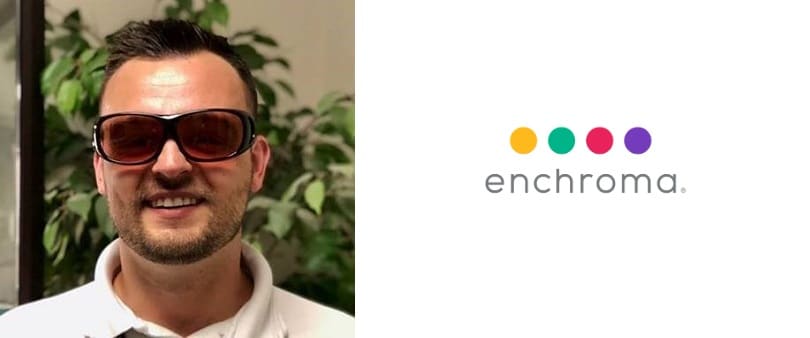US Study Finds Colour Deficiency Glasses May have Enduring Impact
Thursday, July 16 2020 | 13 h 34 min | News, Vision Science
A UC Davis Eye Center study, in collaboration with France’s INSERM Stem Cell and Brain Research Institute, published as a report in Current Biology, found that patented glasses engineered with spectral notch filters enhance colour vision for those with the most common types of red-green colour vision deficiency (“anomalous trichromacy”).
Notably, the ability to identify and experience expanded colour was also demonstrated when test subjects were not wearing the glasses.
At least eight in 100 men (8%) and one in 200 women (0.5%) suffer from red-green colour vision deficiency (CVD), totaling approximately 2.6 million in Canada and 350 million worldwide.
The study evaluated the impact of spectral notch filters on enhancing the chromatic responses of observers with red-green CVD over two weeks of usage. The filters (EnChroma glasses) are designed to increase the separation between colour channels to help people with colour blindness see colours more vibrantly, clearly and distinctly.
In the study of 10 male CVD participants wore the special filter glasses or placebo glasses. Over a two-week period, they kept a diary and were re-tested on days 2, 4 and 11 but without wearing the glasses.
The researchers found that wearing the filter glasses increased responses to chromatic contrast response in individuals with red-green colour blindness. It is unclear how long the improvement lasts without wearing the filters.
“Extended usage of these glasses boosts chromatic response in those with anomalous trichromacy (red-green colour vision deficiency),” said John S. Werner, professor of ophthalmology and a leader in vision science at UC Davis Health. “We found that sustained use over two weeks not only led to increased chromatic contrast response, but, importantly, these improvements persisted when tested without the filters, thereby demonstrating an adaptive visual response.”
The study authors believe the findings suggest that modifications of photoreceptor signals activate a plastic post-receptoral substrate in the brain that could potentially be exploited for visual rehabilitation.
Note:
Study lenses were provided by EnChroma.
One study author, holds shares in EnChroma.






